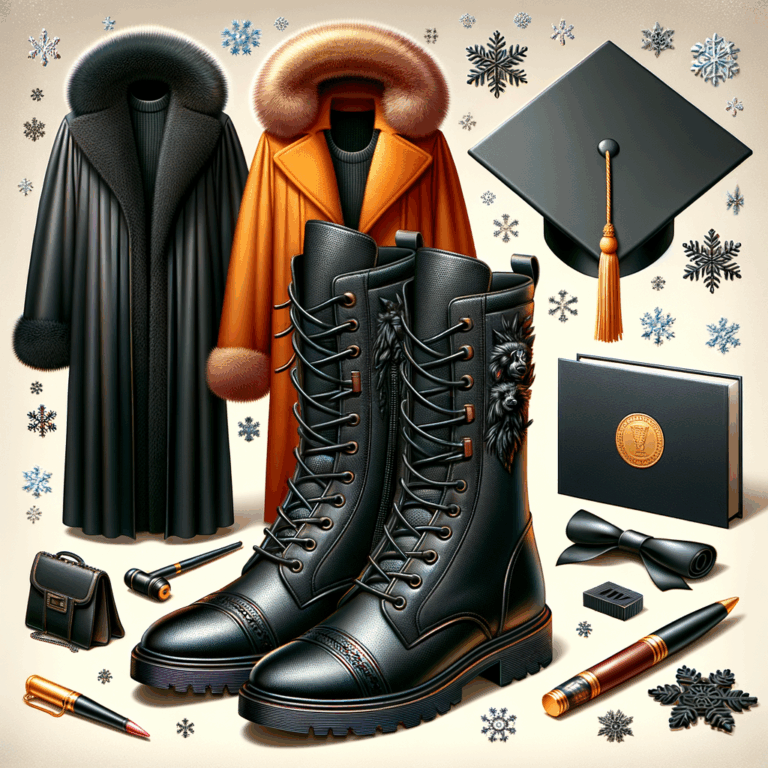
Blog
Protect Your Shins, Play with Confidence
Choosing the Right Shin Guards for Your Sport
In the realm of sports, where passion and determination collide, the protection of our bodies becomes paramount. Among the essential gear that safeguards our well-being, shin guards stand as a testament to the importance of safeguarding our lower extremities. Whether you’re a seasoned athlete or an aspiring enthusiast, choosing the right shin guards is a crucial step towards ensuring your safety and maximizing your performance.
The first step in this journey is to identify the sport you’ll be engaging in. Different sports demand different levels of protection, and choosing shin guards tailored to your specific activity is essential. For instance, soccer players require shin guards that provide ample coverage and impact absorption, while baseball catchers need guards that offer maximum protection against fast-flying balls.
Once you’ve determined the sport, consider the fit and comfort of the shin guards. They should fit snugly without being too tight or loose, allowing for unrestricted movement while providing adequate protection. Adjustable straps or laces enable you to customize the fit, ensuring a secure and comfortable experience.
The material of the shin guards also plays a significant role in their effectiveness. Hard-shelled guards offer superior protection against impacts, while softer guards provide more flexibility and comfort. The choice between the two depends on your personal preferences and the level of protection required for your sport.
Furthermore, consider the weight of the shin guards. Heavier guards offer more protection but can be more cumbersome, while lighter guards provide greater agility and speed. Striking a balance between protection and mobility is key to finding the perfect pair of shin guards.
Finally, don’t overlook the aesthetics of your shin guards. While protection is paramount, choosing guards that complement your style and personality can boost your confidence and motivation. From vibrant colors to sleek designs, there’s a wide range of options available to suit your taste.
Remember, shin guards are not just a piece of equipment; they are an investment in your safety and well-being. By choosing the right shin guards, you empower yourself to perform at your best, knowing that your lower extremities are shielded from harm. So, embrace the journey of finding the perfect pair of shin guards, and let them become your steadfast companions on the field of play.
How to Properly Fit Shin Guards
In the realm of sports, where passion and determination collide, the protection of our bodies becomes paramount. Among the essential gear that safeguards our limbs, shin guards stand as a testament to the importance of safeguarding our lower extremities. Whether you’re a seasoned athlete or a novice stepping onto the field, mastering the art of wearing shin guards is crucial for both comfort and protection.
The first step in this journey is to select the right size. Shin guards should fit snugly against your shins, providing ample coverage without restricting movement. Measure from the top of your ankle to just below your knee, and choose a pair that aligns with this measurement. Adjustable straps allow for a customized fit, ensuring a secure and comfortable experience.
Once you have the perfect fit, it’s time to don your shin guards. Begin by sliding them onto your legs, ensuring the padded portion covers the front of your shins. Secure the top strap around your calf, and tighten it until the guard feels secure but not constricting. Repeat this process with the bottom strap, ensuring it’s snug but not cutting off circulation.
Proper positioning is essential for optimal protection. The top of the shin guard should rest just below your kneecap, while the bottom should extend to the top of your ankle. This positioning ensures that your entire shin is shielded from impact.
As you embark on your athletic endeavors, remember that shin guards are your unwavering companions, protecting you from the rigors of the game. Wear them with pride, knowing that they are a symbol of your commitment to safety and excellence.
In the heat of competition, when adrenaline courses through your veins, the presence of properly fitted shin guards will instill a sense of confidence and allow you to perform at your peak. They are not merely a piece of equipment; they are an extension of your determination, a testament to your unwavering spirit.
So, embrace the power of shin guards, and let them be your constant companions on the field of play. With every step you take, they will serve as a reminder of your dedication to the sport and your unwavering pursuit of victory.
Wearing Shin Guards for Maximum Protection
In the realm of sports, where passion and determination collide, the protection of our bodies becomes paramount. Among the essential gear that safeguards our well-being, shin guards stand as a testament to the importance of shielding our vulnerable limbs.
Donning shin guards is not merely an act of compliance but a conscious choice to prioritize our safety. As we lace up our cleats and step onto the field, these protective barriers become an extension of ourselves, empowering us to play with confidence and minimize the risk of injury.
To ensure maximum protection, it is crucial to wear shin guards correctly. Begin by selecting a pair that fits snugly around your shins, providing ample coverage from the ankle to just below the knee. The guards should be lightweight and flexible, allowing for unrestricted movement without compromising protection.
Once you have the right fit, slide the shin guards into place and secure them with the straps or laces provided. Ensure that the guards are positioned correctly, with the top edge resting comfortably against the bottom of your kneecap. The straps should be tightened firmly but not so tightly as to restrict circulation.
Properly worn shin guards act as a shield against impact, absorbing and dispersing the force of tackles and collisions. They protect our shins from abrasions, cuts, and more severe injuries, allowing us to play with peace of mind.
Beyond their protective function, shin guards also serve as a symbol of our commitment to the game. They represent our willingness to embrace the challenges and risks that come with competition, while prioritizing our well-being.
As we step onto the field, adorned in our shin guards, we carry with us the knowledge that we have taken the necessary precautions to protect ourselves. This empowers us to play with greater confidence, knowing that we have done everything within our power to minimize the chances of injury.
Wearing shin guards is not just about following the rules or meeting expectations. It is about making a conscious choice to prioritize our safety and well-being. By embracing the protection they offer, we not only safeguard our bodies but also empower ourselves to play with passion and determination, knowing that we are equipped to face the challenges of the game.
Tips for Keeping Shin Guards Clean and Dry
In the realm of sports, where passion and determination collide, shin guards stand as unsung heroes, silently protecting the legs of athletes from the relentless onslaught of impacts. While their primary function is to safeguard, shin guards also play a crucial role in maintaining hygiene and comfort.
To ensure your shin guards remain clean and dry, a meticulous approach is essential. After each use, wipe them down with a damp cloth to remove any dirt or sweat. For a deeper clean, soak them in a solution of warm water and mild detergent. Rinse thoroughly and allow them to air dry completely.
Moisture is the nemesis of shin guards, as it can lead to the growth of bacteria and unpleasant odors. To combat this, consider using moisture-wicking socks that draw sweat away from the skin. Additionally, sprinkle some baking soda inside the shin guards to absorb moisture and neutralize odors.
Proper storage is paramount in preserving the longevity of your shin guards. Avoid leaving them in damp or enclosed spaces, as this can promote mold growth. Instead, store them in a well-ventilated area where they can dry thoroughly.
Regular cleaning and proper storage not only enhance the hygiene of your shin guards but also extend their lifespan. By following these simple steps, you can ensure that your shin guards remain clean, dry, and ready to protect you on the field of play.
Remember, shin guards are more than just protective gear; they are an investment in your well-being. By taking care of them, you are not only safeguarding your legs but also promoting a healthy and enjoyable sporting experience. So, embrace the responsibility of maintaining your shin guards, and let them be your steadfast companions in the pursuit of athletic excellence.
How to Store Shin Guards Properly
**How to Store Shin Guards Properly: A Guide to Protecting Your Precious Protectors**
In the realm of sports, shin guards stand as unsung heroes, shielding our legs from the relentless onslaught of kicks and impacts. However, just as we value our own well-being, so too must we cherish the guardians of our shins. Proper storage is paramount to ensuring their longevity and effectiveness.
Firstly, let us consider the ideal environment for shin guards. A cool, dry place is their sanctuary, away from the clutches of moisture and extreme temperatures. Avoid leaving them in damp areas, such as the bottom of your sports bag or a humid locker room. Moisture can lead to the growth of bacteria and mold, compromising the integrity of the guards.
Secondly, it is essential to keep shin guards clean. After each use, wipe them down with a damp cloth to remove dirt and sweat. If they become particularly soiled, you can wash them in cold water with a mild detergent. Allow them to air dry completely before storing them.
Thirdly, proper ventilation is crucial. Store shin guards in a well-ventilated area to prevent the accumulation of odors and moisture. Avoid using airtight containers, as they can trap moisture and promote the growth of bacteria.
Fourthly, consider using a dedicated storage bag or container. This will keep shin guards organized and protected from dust and debris. Choose a bag that is breathable and allows for air circulation.
Finally, remember to inspect shin guards regularly for any signs of damage. Cracks, tears, or loose straps can compromise their effectiveness. If you notice any damage, it is best to replace the shin guards to ensure optimal protection.
By following these simple steps, you can extend the lifespan of your shin guards and ensure they remain steadfast companions in your sporting endeavors. Remember, proper storage is not merely a chore but an act of gratitude towards these unsung heroes that safeguard our legs.
When to Replace Shin Guards
**When to Replace Shin Guards: A Guide to Protecting Your Legs**
Shin guards are an essential piece of protective gear for any soccer player. They shield your legs from impact and injury, allowing you to play with confidence and focus on the game. However, like any other piece of equipment, shin guards have a lifespan and need to be replaced periodically to ensure optimal protection.
The first sign that it’s time to replace your shin guards is when they become cracked or broken. Any damage to the shell can compromise their ability to absorb impact, leaving your legs vulnerable. Additionally, if the padding inside the shin guards has become compressed or worn out, it will no longer provide adequate cushioning.
Another indicator that it’s time for new shin guards is when they no longer fit properly. As you grow or your body changes, your shin guards may become too small or too loose. Ill-fitting shin guards can slip or move around during play, reducing their effectiveness.
The frequency with which you need to replace your shin guards depends on several factors, including the intensity of your play, the frequency of your training, and the quality of the shin guards themselves. If you play regularly and engage in intense training sessions, you may need to replace your shin guards more often than someone who plays less frequently.
To ensure that your shin guards are always providing the best possible protection, it’s a good idea to inspect them regularly for any signs of damage or wear. If you notice any cracks, breaks, or excessive wear, it’s time to invest in a new pair.
Replacing your shin guards may seem like a minor inconvenience, but it’s an important step in protecting your legs and ensuring your safety on the field. By following these guidelines, you can ensure that your shin guards are always in top condition, allowing you to play with confidence and focus on the game.
Common Mistakes to Avoid When Wearing Shin Guards
In the realm of sports, where passion and determination collide, the proper use of protective gear is paramount. Shin guards, an essential shield for the lower legs, play a crucial role in safeguarding against impact and injury. However, even with the best intentions, common mistakes can undermine their effectiveness.
One such pitfall is wearing shin guards that are too loose. Like a loose glove, they fail to provide adequate protection, leaving the vulnerable shins exposed to potential harm. Conversely, shin guards that are too tight can restrict movement, hindering performance and causing discomfort. Finding the perfect fit is key, ensuring both protection and mobility.
Another common error is neglecting to wear socks underneath shin guards. Socks act as a buffer, preventing friction and blisters. Without them, the skin can become irritated and sore, detracting from the enjoyment of the game. Additionally, socks help absorb sweat, keeping the feet dry and comfortable.
Improper positioning of shin guards is another pitfall to avoid. They should be worn high enough to cover the entire shin bone, extending from just below the knee to the top of the ankle. If they are positioned too low, they may not provide adequate protection for the most vulnerable areas.
Furthermore, it is essential to ensure that shin guards are securely fastened. Loose straps or buckles can cause them to shift or fall off during play, compromising safety. Tightening the straps snugly, without overdoing it, is crucial for keeping the shin guards in place.
Finally, it is important to remember that shin guards are not indestructible. They can become damaged or worn over time, reducing their protective capabilities. Regularly inspecting shin guards for cracks, tears, or other signs of wear is essential. If any damage is detected, it is advisable to replace them promptly.
By avoiding these common mistakes, you can maximize the effectiveness of your shin guards, ensuring optimal protection and performance on the field. Remember, the proper use of protective gear is not merely a matter of compliance but a testament to your commitment to your own well-being and the pursuit of excellence in sports.
How to Wear Shin Guards with Different Types of Footwear
**How to Wear Shin Guards with Different Types of Footwear**
Shin guards are an essential piece of protective gear for any soccer player, regardless of their skill level. They help to protect the shins from impact, which can prevent serious injuries. However, shin guards can be uncomfortable if they are not worn properly. Here are a few tips on how to wear shin guards with different types of footwear:
**Cleats**
Cleats are the most common type of footwear worn by soccer players. They provide good traction on the field, which is important for quick starts and stops. When wearing shin guards with cleats, it is important to make sure that the shin guards are long enough to cover the entire shin. The shin guards should also be snug, but not too tight. If the shin guards are too loose, they will move around and become uncomfortable.
**Turf shoes**
Turf shoes are designed for playing on artificial turf. They have a softer sole than cleats, which makes them more comfortable to wear. However, turf shoes do not provide as much traction as cleats. When wearing shin guards with turf shoes, it is important to make sure that the shin guards are not too long. The shin guards should only cover the shin, and they should not extend over the ankle.
**Sneakers**
Sneakers are not ideal for playing soccer, but they can be worn in a pinch. When wearing shin guards with sneakers, it is important to make sure that the shin guards are snug. The shin guards should also be long enough to cover the entire shin.
**No matter what type of footwear you are wearing, it is important to make sure that your shin guards are comfortable.** If your shin guards are uncomfortable, you will be more likely to take them off, which will leave your shins vulnerable to injury. Take the time to find a pair of shin guards that fit well and that you are comfortable wearing. Your shins will thank you for it.
**Here are a few additional tips for wearing shin guards:**
* Always wear shin guards when playing soccer.
* Make sure that your shin guards are the right size.
* Wear shin guards that are snug, but not too tight.
* If your shin guards are uncomfortable, take them off and adjust them.
* Never play soccer without shin guards.
How to Wear Shin Guards for Different Sports
In the realm of sports, where passion and determination collide, shin guards stand as an indispensable shield, protecting the vulnerable shins from the relentless onslaught of impacts. Whether you’re a seasoned athlete or an aspiring novice, mastering the art of wearing shin guards is paramount to ensuring both safety and optimal performance.
For soccer enthusiasts, shin guards are an essential piece of equipment. Choose guards that fit snugly around your shins, extending from just below the knee to the top of the ankle. Secure them firmly with straps or Velcro closures, ensuring they remain in place during the intense battles on the pitch.
In the fast-paced world of hockey, shin guards play a crucial role in safeguarding players from the sharp blades of skates and the impact of flying pucks. Opt for guards that provide ample coverage, extending from the knee to the ankle. They should be lightweight and flexible, allowing for unrestricted movement while providing maximum protection.
For baseball catchers, shin guards are an indispensable part of their gear. Choose guards that are specifically designed for the catcher’s position, offering extended coverage to protect the knees and shins from foul tips and wild pitches. Ensure a secure fit to prevent any shifting or discomfort during the game.
In the martial arts arena, shin guards serve as a vital defense against kicks and strikes. Select guards that are made of durable materials, such as leather or synthetic fabrics, to withstand the rigors of training and competition. They should fit snugly around the shins, providing ample protection without hindering mobility.
Regardless of the sport you play, wearing shin guards properly is essential for your safety and well-being. Choose guards that are the right size and fit, ensuring they provide adequate coverage and support. Secure them firmly to prevent any movement or discomfort during play.
Remember, shin guards are not just a piece of equipment; they are a symbol of your commitment to protecting yourself and maximizing your performance. By wearing them correctly, you empower yourself to push your limits, embrace the challenges of your sport, and achieve your full potential.
The Benefits of Wearing Shin Guards
In the realm of sports, where passion and determination collide, the protection of our bodies becomes paramount. Among the essential gear that safeguards our well-being, shin guards stand as a testament to the importance of safeguarding our lower limbs.
Donning shin guards is not merely an act of compliance but a conscious choice to shield ourselves from the unforgiving impact of the game. They serve as a protective barrier, absorbing the force of tackles, kicks, and collisions that would otherwise leave our shins vulnerable to injury. By wearing shin guards, we empower ourselves to play with confidence, knowing that our bodies are shielded from harm.
The benefits of wearing shin guards extend beyond the physical realm. They instill a sense of security and peace of mind, allowing us to focus on the game without the nagging worry of potential injuries. With our shins protected, we can unleash our full potential, pushing ourselves to the limits without fear of setbacks.
Moreover, shin guards serve as a symbol of our commitment to the sport. They represent our dedication to our team, our opponents, and ourselves. By wearing them, we demonstrate our respect for the game and our willingness to play it with integrity and sportsmanship.
The process of wearing shin guards is simple yet crucial. Ensure that they fit snugly against your shins, providing ample coverage without restricting your movement. Secure them firmly with straps or laces, ensuring they remain in place throughout the game.
As you step onto the field, adorned in your shin guards, let their presence inspire you. They are not merely a piece of equipment but a symbol of your resilience, your determination, and your unwavering pursuit of excellence. Embrace the protection they offer, and let it fuel your performance.
Remember, the benefits of wearing shin guards are immeasurable. They safeguard your body, empower your mind, and embody your commitment to the sport. So, as you prepare for the next game, don your shin guards with pride and confidence, knowing that you are well-equipped to conquer the challenges that lie ahead.
Q&A
**Questions and Answers about Wearing Shin Guards**
1. **When should I wear shin guards?**
– When playing sports that involve kicking or contact, such as soccer, hockey, and lacrosse.
2. **What size shin guards should I get?**
– Measure from the top of your knee to the bottom of your ankle. Choose shin guards that cover this distance.
3. **How do I put on shin guards?**
– Slide the shin guards over your legs, with the padded side facing your shins.
– Adjust the straps to ensure a snug fit.
4. **How tight should shin guards be?**
– Tight enough to stay in place during play, but not so tight that they restrict movement.
5. **Should I wear socks under shin guards?**
– Yes, to prevent chafing and absorb sweat.
6. **How do I clean shin guards?**
– Wipe them down with a damp cloth after each use.
– If they become very dirty, hand-wash them in cold water with mild detergent.
7. **How often should I replace shin guards?**
– Every 1-2 years, or sooner if they become damaged or lose their protective qualities.
8. **What are the different types of shin guards?**
– Slip-in: Slide over the leg like a sleeve.
– Strap-on: Secured with adjustable straps.
– Compression: Provide additional support and reduce muscle fatigue.
9. **What are the benefits of wearing shin guards?**
– Protect the shins from impact and injury.
– Reduce pain and discomfort during play.
– Improve confidence and performance.
10. **What are the consequences of not wearing shin guards?**
– Increased risk of shin injuries, such as bruises, cuts, and fractures.
– Potential for more severe injuries in contact sports.
Related Posts
What to Wear to a Tennis Match: Stunning Picks
Looking to ace your style game at the next tennis match? Discover how a chic blue hoodie can become your winning choice, blending casual comfort with a dash of courtside chic.
Stunning Black Tie Attire: Effortless Elegance Unveiled
Whether youre deciding what to wear at a concert or a high-society gala, discovering your ideal black tie outfit is all about embracing effortless elegance that echoes your unique style and sophistication. Lets dive into crafting that perfect, head-turning ensemble together.
Egypt Dress Code: Must-Have Tips for Female Tourists
Navigating the dress code in Egypt can feel like a delicate dance, but fear not, fashionable traveler! Our expert tips will help you dress respectably while still showcasing your unique style, ensuring every moment of your journey is as comfortable as it is chic.
Must-Have Outfits for a Steam Room Visit
Step into the steam room with confidence and elegance by mastering **what to wear to a steam room**. Our guide ensures you stay effortlessly stylish and supremely comfortable, no matter the humidity!
K-Pop Concert Attire: Must-Have Outfits for Trendsetters
Step into the spotlight at your next K-Pop concert with outfits that echo the electrifying energy of BTS, BLACKPINK, or EXO! Let us guide you through selecting vibrant, trend-setting pieces that not only capture the essence of K-pop culture but also showcase your individual flair and style.
Stunning Outfits for College Football Games: Score Big!
Dress to impress at your next college football game with Covetis luxurious and spirited fashion finds! Whether you’re cheering from the bleachers or a cozy college bar, discover outfits that truly resonate with your personal style and amplify your game-day experience.
Stunning Shoe Styles for Winter Graduations!
Deciding what to wear for a winter graduation can be a breeze, especially with the right shoes! Let me guide you through picking stylish yet practical footwear that will have you walking across that stage with confidence and grace.
What to Wear: Stunning Outfits for Theater Nights
Soaring above the clouds in a hot air balloon is an unparalleled adventure, and choosing what to wear is crucial for comfort and style. Lets ensure your outfit is as breathtaking as the view, blending chic with practicality for an unforgettable aerial experience.
Country Club Chic: Must-Have Outfits for Elegant Evenings
For your next pearls and prosecco bridal shower, embrace the timeless allure of country club chic with outfits that blend classic elegance with a touch of modern sophistication. Discover how to curate that perfect ensemble that will have you radiating confidence and style at any upscale event.
Stunning & Safe: Best Outfits for Food Workers
Stepping into the courtroom as a witness requires a thoughtful selection of attire that reflects professionalism and respect. Discover the key elements of dressing appropriately for court to ensure you present a dignified and sincere image that supports the gravitas of the proceedings.
Fine Dining Fashion: Must-Have Looks for Green Blazers
Stepping into a fine dining restaurant requires a touch of elegance and a dash of style; discover how a sophisticated green blazer can elevate your next gourmet outing, ensuring you look as exquisite as the dishes being served.
Stunning Jewelry Must-Haves for Bridesmaids
Deciding what jewelry to wear as a bridesmaid is more than just adornment; its about crafting moments and memories. Let me guide you through selecting stunning pieces that complement the bridal glow and celebrate your unique touch to the day’s enchantment.


























